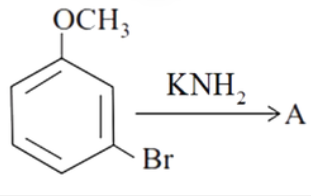Identify the type of reaction (Exothermic/Endothermic)
Respiration
Evaporation of water
The correct Answer is:C
To identify the type of reaction for respiration and evaporation of water, we can analyze each process step by step.
Step 1: Analyze Respiration
1. Definition: Respiration is a biochemical process where glucose is broken down in the presence of oxygen to produce energy, carbon dioxide, and water.
2. Energy Change: During respiration, energy is released as glucose is oxidized. This energy is stored in the form of ATP (adenosine triphosphate).
3. Type of Reaction: Since energy is released during the process, respiration is classified as an exothermic reaction.
Step 2: Analyze Evaporation of Water
1. Definition: Evaporation is the process where liquid water is converted into water vapor.
2. Energy Change: In this process, water molecules at the surface absorb heat energy from the surroundings. This absorption of heat increases the kinetic energy of the water molecules, allowing them to overcome intermolecular forces and escape into the vapor phase.
3. Type of Reaction: Since heat energy is absorbed during evaporation, this process is classified as an endothermic reaction.
Conclusion
- Respiration: Exothermic reaction (energy is released).
- Evaporation of Water: Endothermic reaction (energy is absorbed).
---
1. Definition: Respiration is a biochemical process where glucose is broken down in the presence of oxygen to produce energy, carbon dioxide, and water.
2. Energy Change: During respiration, energy is released as glucose is oxidized. This energy is stored in the form of ATP (adenosine triphosphate).
3. Type of Reaction: Since energy is released during the process, respiration is classified as an exothermic reaction.
1. Definition: Evaporation is the process where liquid water is converted into water vapor.
2. Energy Change: In this process, water molecules at the surface absorb heat energy from the surroundings. This absorption of heat increases the kinetic energy of the water molecules, allowing them to overcome intermolecular forces and escape into the vapor phase.
3. Type of Reaction: Since heat energy is absorbed during evaporation, this process is classified as an endothermic reaction.
- Respiration: Exothermic reaction (energy is released).
- Evaporation of Water: Endothermic reaction (energy is absorbed).
Topper's Solved these Questions
- BOOK - CENGAGE CHEMISTRY ENGLISHCHAPTER - ALIPHATIC AND AROMATIC ALDEHYDES AND KETONESEXERCISE - Exercises Assertion-Reasoning6videos
ALIPHATIC AND AROMATIC ALDEHYDES AND KETONES
- BOOK - CENGAGE CHEMISTRY ENGLISHCHAPTER - ALIPHATIC AND AROMATIC ALDEHYDES AND KETONESEXERCISE - Archives Objective10videos
ALIPHATIC AND AROMATIC ALDEHYDES AND KETONES
- BOOK - CENGAGE CHEMISTRY ENGLISHCHAPTER - ALIPHATIC AND AROMATIC ALDEHYDES AND KETONESEXERCISE - Exercises Multiple Correct33videos
ALIPHATIC AND AROMATIC ALDEHYDES AND KETONES
- BOOK - CENGAGE CHEMISTRY ENGLISHCHAPTER - ALCOHOL,PHENOL AND ETHERSEXERCISE - Archives Analytical And Descriptive15videos
ALCOHOL,PHENOL AND ETHERS
- BOOK - CENGAGE CHEMISTRY ENGLISHCHAPTER - APPENDIX INORGANIC VOLUME 2EXERCISE - Short Answer Type179videos
APPENDIX INORGANIC VOLUME 2
Similar Questions
Knowledge Check
- Question 1 - Select One
Identify A and predict the type of reaction
 A
A B
B C
C D
D
- Question 2 - Select One
In endothermic reactions,
Areactants have more energy than productsBreactants have less energy than productsCreactants and products have same energyDreactants have lower temperature than products.
Identify A and predict the type of reaction
 View Solution
View SolutionCatalyst makes a reaction more exothermic.
View SolutionAssertion (A) : The value of K for a reaction may increase or decrease with increase in temperature depending upon whether the reaction is exothermic or endothermic.
Reason (R) : With increase in temperature, the extent of reaction increases.View SolutionIdentify the type of reactions on the basis of following observations:
On heating orange coloured ammonium dichromate, chromium oxide is produced along with nitrogen and water vapour.View SolutionFor an exothermic reaction
View SolutionIdentify the type of reaction
NaOH+HCl→NaCl+H2OView Solution

